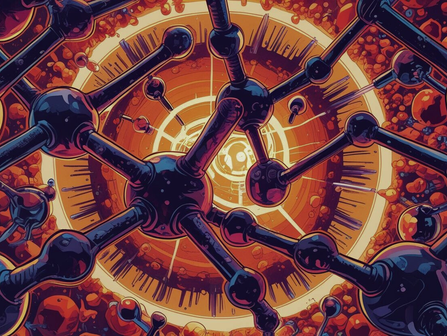top of page
Search
All Articles


Molecular Mechanics' Cornerstone: Force Fields - Part 2
In molecular modeling, the factors that determine the energy of a system are not limited to bonded interactions such as bonds, angles, and torsions. Even when atoms are not directly connected through covalent bonds, they can still influence each other via non-bonded interactions. These interactions form the basis of many physical and biological processes, including molecular folding, stability, binding affinity, and phase behavior.

Emre Can Buluz
Aug 216 min read


Molecular Mechanics’ Cornerstone: Force Fields – Part 1
Moleküler modelleme, atomlar arası etkileşimleri sayısal olarak tanımlayarak doğadaki fiziksel süreçleri bilgisayar ortamında canlandırmayı amaçlamaktadır. Bu sürecin temel yapı taşlarından biri olan kuvvet alanları (force fields), atomların birbirleriyle nasıl etkileştiğini belirleyen matematiksel fonksiyonlar ve parametrik sabitler bütünüdür. Kuvvet alanları sayesinde moleküllerin geometrisi optimize edilir.

Emre Can Buluz
Aug 107 min read


Pairwise Sequence Alignment: Revealing Genetic Differences and Similarities
DNA and protein sequences undergo changes over time due to mutations. To investigate these evolutionary or environmental mutations or to identify biologically meaningful regions such as evolutionary relationships or functional similarities two or more biological sequences are compared. In these comparisons, individual bases or specific patterns are searched for.

Ceyda Güven
Aug 311 min read


Schrödinger Equation and Atomic Orbitals
Understanding the electronic structure of atoms and molecules is one of the cornerstones of modern chemistry and drug design. The Schrödinger equation, developed to describe these structures, lies at the heart of quantum chemistry and forms the foundation of computational chemistry approaches.

İlayda Boyraz
Jul 163 min read


PCR: A Revolutionary Technique in Molecular Biology
With the incredible advancements in biology and molecular genetics over the past century, a significant amount of genetic data has been generated and accumulated. Alongside technological progress, this large volume of genetic information has transformed into an interdisciplinary field—bioinformatics—that not only enables the processing and storage of these data but also makes them accessible for various users.

Muhammed Furkan Üstün
Jul 97 min read
bottom of page
